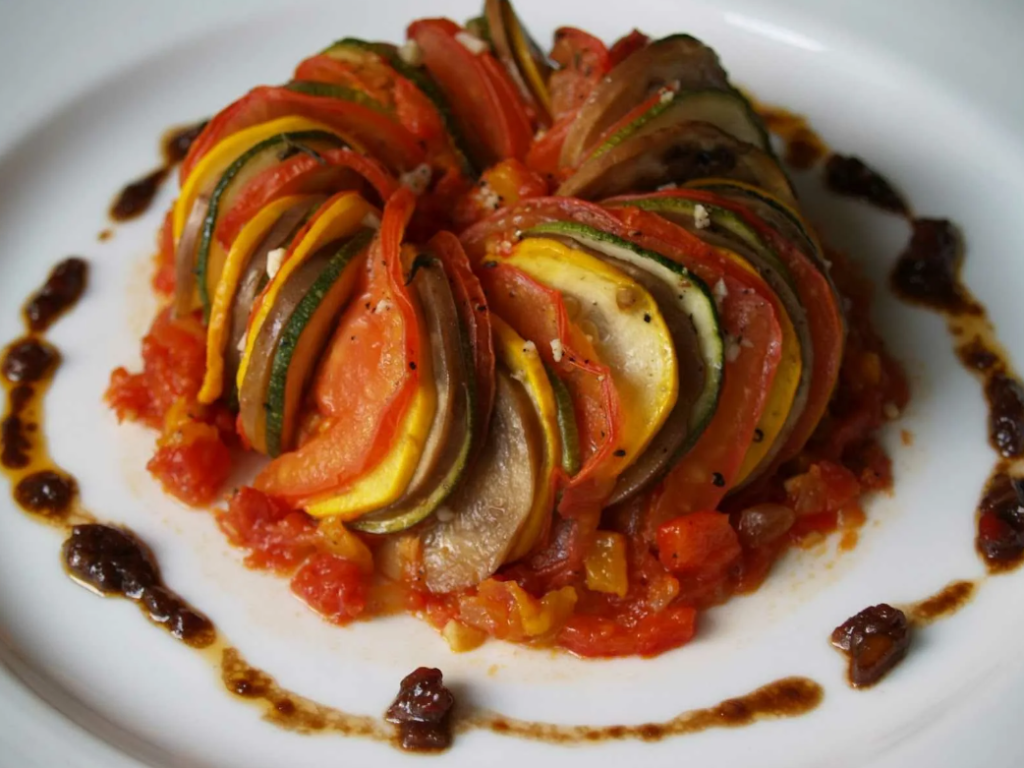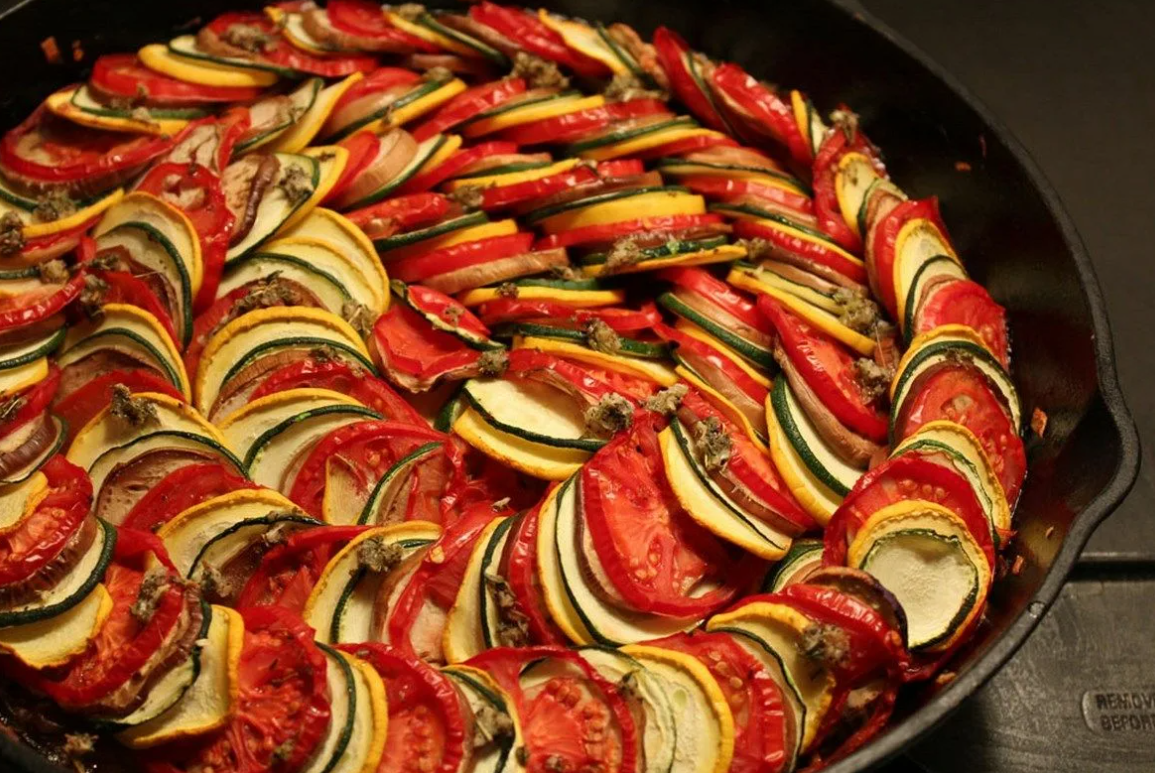Ratatouille is not just a dish, it is a true culinary legend that transports us into the world of aromas and flavors of the French countryside. It is an exquisite combination of vegetables, spices, and traditions that captivates the imagination and satisfies the most discerning palate.
The history of ratatouille dates back to the depths of France’s past. It is first mentioned in culinary literature of the 18th century, but its real popularity came later, thanks to the famous animated movie of the same name, which only heightened interest in this gastronomic delicacy.
The main ingredients of ratatouille are eggplants, zucchini, tomatoes, onions, peppers, and garlic. The vegetables are diced and simmered in olive oil with the addition of herbs and spices such as thyme, rosemary, and basil, which enrich the dish with their aroma.
Ratatouille is not only a delicious dish but also a real feast for the eyes. When served properly, the vegetables are arranged in a baking dish in the form of a colorful mosaic pattern, giving the dish additional refinement and aesthetic appeal.

While the original French recipe for ratatouille is simple and accessible, there are many variations of this dish in various culinary traditions. For example, in Mediterranean cuisine, it may be complemented with olives and capers, while in Italian cuisine, mozzarella and balsamic vinegar may be added.
Making ratatouille is a true creative process, where each step is filled with love for food and respect for traditions. This dish not only nourishes the body but also soothes the soul, reminding us of the wonderful moments of family dinners and gatherings with loved ones.
Thus, ratatouille is not just food; it is a true symbol of gastronomic and cultural heritage that can unite us around the table and bring joy and satisfaction to everyone who tries it.
